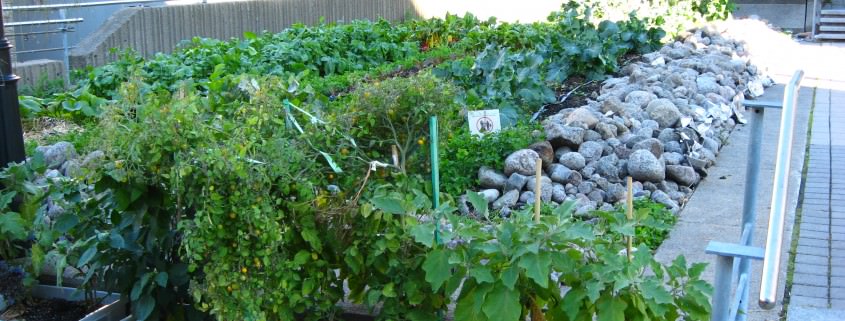Restaurants Harvesting the Benefits of Rooftop Farming
The farm-to-table movement has gained great popularity in the restaurant industry in recent years. An increasing number of patrons today are willing and eager to pay a premium for ingredients that they know to be incredibly fresh. They are also willing to pay more for ingredients that have traveled a short distance from local farmland, thus resulting in meals that have been prepared in a manner that is more environmentally responsible. But what if that farmland were as nearby as the restaurant’s roof or back yard? Forget mere rooftop gardening; restaurants today are planting what they’ve come to call rooftop farms, and these “farms” can yield, on a small scale, organic produce used in a whole variety of creative ways throughout the menu.
Fresh, Unique Ingredients
Rooftop vegetable and herb gardens are especially gaining popularity in Chicago’s and New York’s restaurant scene, where places like Frontera Grill, Homestead, Uncommon Ground, The LCL Bar & Kitchen, Rosemary’s, and Bell Book & Candle grow everything from the typical mint, zucchini, squash, salad greens, and tomatoes to the products of just about any type of seed that can be found and ordered on the internet. Restaurants that practice their own local agriculture – whether on the roof, out back, or in a nearby space – have been known to grow as many as twenty-two different crops, giving chefs an extra incentive to change their menus many times throughout the year. While some may be quick to assume that environmentally friendly trends like rooftop farming appeal almost exclusively to a young, hip crowd, one might be surprised to learn that even the Waldorf-Astoria Hotel grows produce on its rooftop – and that the harvested ingredients are used by all four of the restaurants that the Waldorf houses. Fine taste speaks for itself!
One Step Closer to a Better World
Many might also be surprised to learn the name of one of the earliest (or at least most famous) rooftop vegetable gardeners: Nelson Mandela. Mandela (or “Madiba,” as he was fondly called) is of course most known for his more radical fights for a better world, but the leader also gave away food that he grew himself on the prison rooftop. He gave some of it away to prison guards and also arranged for much of the crop to be cooked as part of special meals prepared for fellow inmates. In the spirit of Mandela, the Brooklyn South African restaurant that bears the name Madiba in his honor also grows its own food.
To many, working toward using ethically sourced food whenever possible may pale in comparison to much of the other work that great world leaders have carried out throughout history, but it is a small step toward leaving behind a better planet for future generations. After all, food that requires no motorized transportation (or even refrigeration) as it is carried downstairs – or down the block – releases no additional emissions into the air. What is more, plants actually make the air cleaner by absorbing existing carbon dioxide.
Boosting the Other Green
The qualities that make rooftop farming environmentally wise and sustainable are also some of the same qualities that make it cost-effective. For instance, restaurateurs pay nothing to ship or store ingredients that require neither. Per square foot, “green” roof installations cost a mere $10 to $25, and maintaining them over the course of a year costs less than two dollars a square foot; these installations also reduce heating and cooling costs and, when done properly, actually help protect roofs from the damaging effects of the sun and other environmental factors. Not only are customers also willing to pay higher prices for food that they know to be fresh, organic, local, and ethically produced in accordance with environmental concerns, but attractive restaurant gardens that are integrated into dining spaces (or which serve as beautiful views from inside of them) are a real draw for business – particularly to locals who appreciate what this adds to their neighborhoods. To top it all off, tax incentives are also available for such projects; for restaurateurs who have been considering planting their own herb and vegetable gardens, that’s certainly a green “thumbs up” if ever we’ve heard one.
- Uncorkd Adds New Vendor Purchasing, Tracking and Reporting Functionality - February 13, 2018
- Uncorkd Adds New Inventory Management Functionality with POS Integration - July 24, 2017
- How Many Red or White Wines Should You Have on Your List - May 3, 2016



